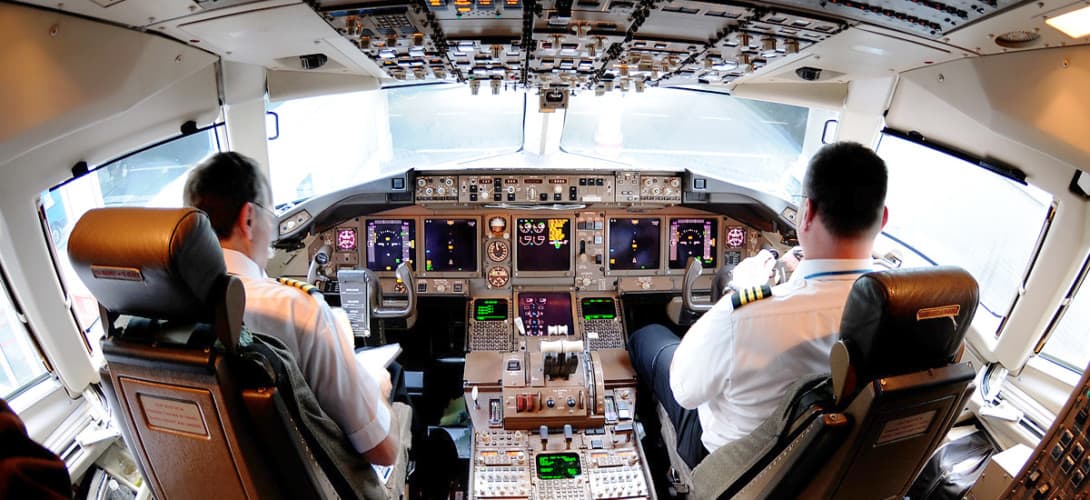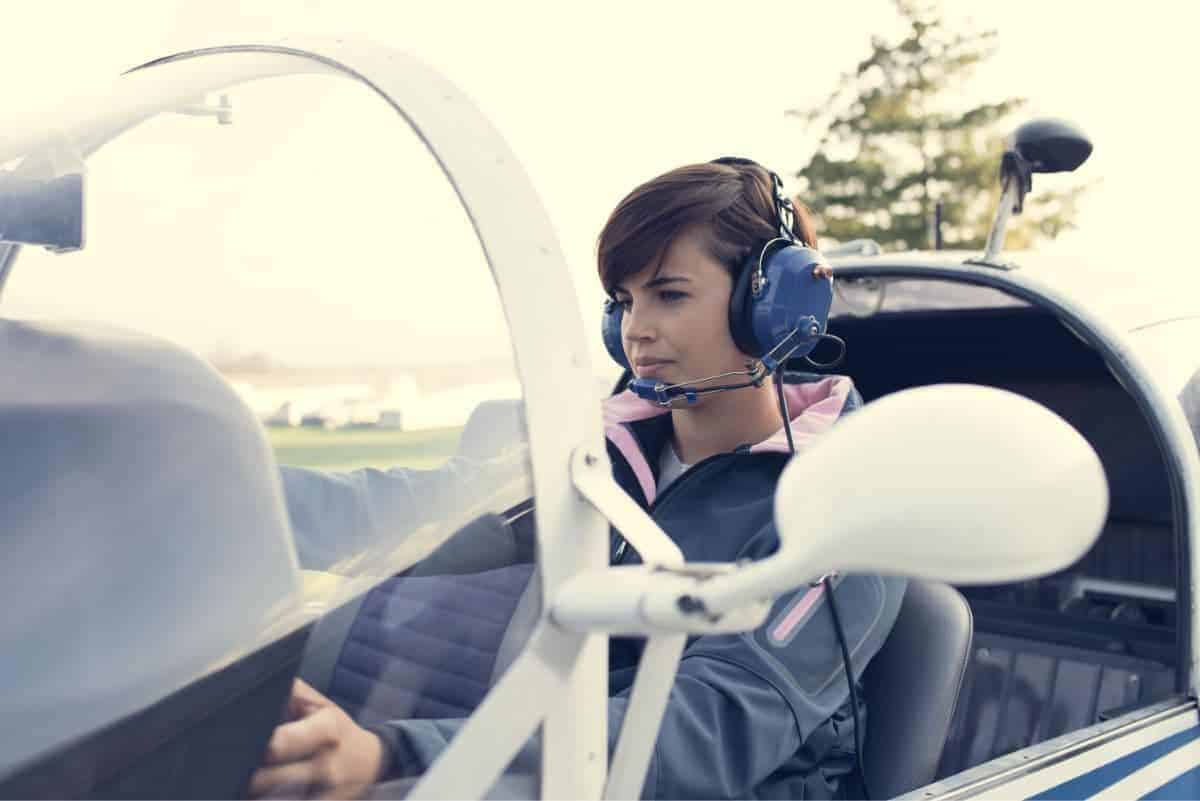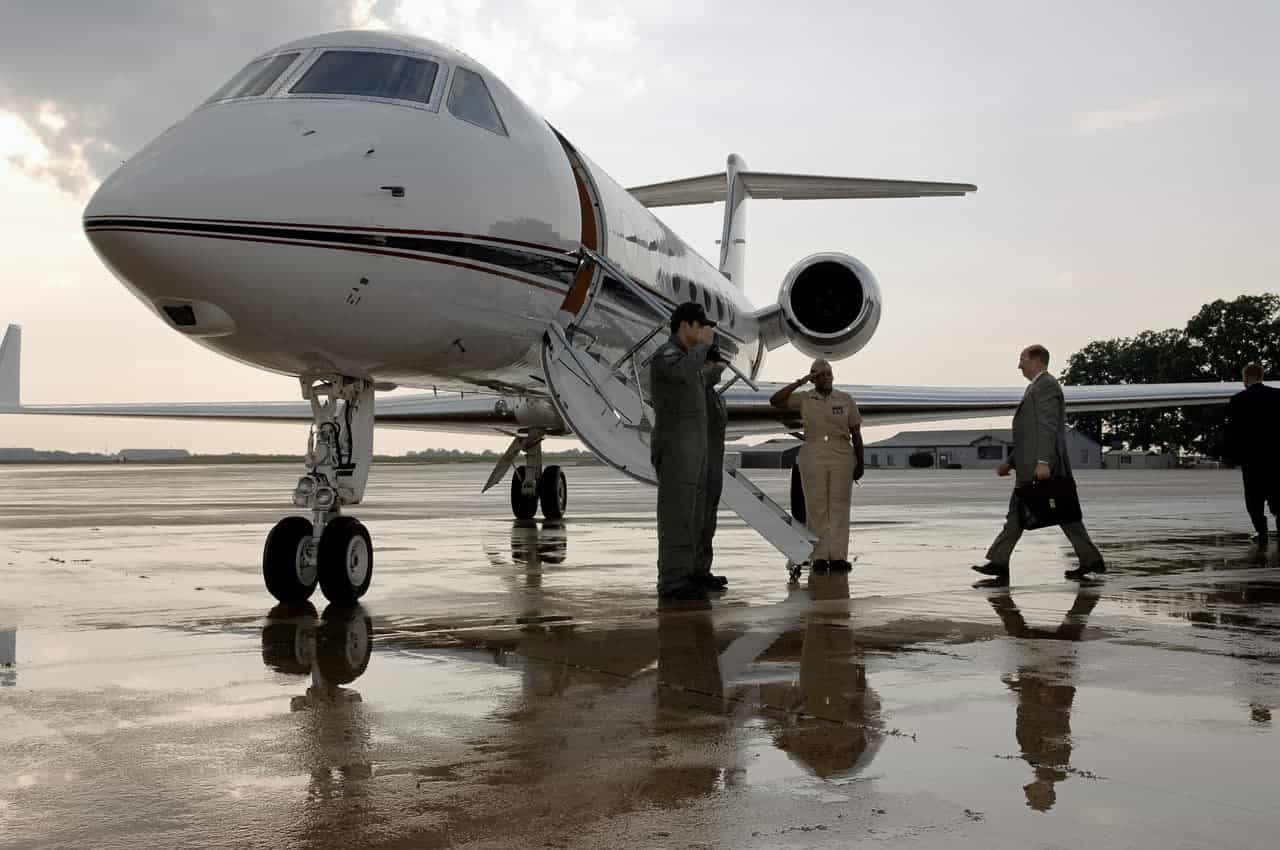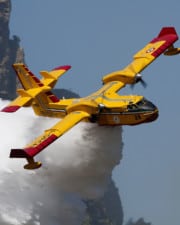In the simplest terms, human factors are all about how the pilot’s body and mind work in an airplane. This article takes a deep dive into aeromedical and psychological factors, as well as the 12 human errors in aviation.
Pilots spend time learning how the engine or wings are built and how all the electronics in the cockpit work. But they also spend a lot of time learning about themselves and learning how to make safe decisions and choices while flying.
Human factors can roughly be divided into two types. One deals with physical medical issues, known as aeromedical factors, while the other deals with psychological issues, like decision-making and risk management.
Human Factors and Human Behavior
Human factors in aviation is a multidisciplinary topic that covers quite a few different topics and ideas. It is the study of both the physical body and the mental mind. It’s an engineering problem, and studying human behavior helps designers make it easier to fly planes. It’s also the study of human errors and how to prevent them in the future.
A large component of human factors science is dedicated to learning how people interact with machines like aircraft. It is similar to an engineering concept known as ergonomics. Designers carefully plan out the layout of cockpit controls. A classic example is how the landing gear control in most planes is shaped like a wheel, while the flap control is shaped like a flap. These simple changes reduce the possibility of human-made errors.
Human factors training goes hand in hand with a heavy dose of psychology. Pilots operate in dynamic and fluid environments. The weather is always changing, and they’re continually moving along at a great rate of speed. The machine is changing as it flies, as fuel is burned, and systems change. A pilot is bombarded by information all the time. What should they pay the most attention to? When a problem comes up, how should a pilot decide what to do?
The tricky thing to understand about human factors is that everyone responds differently. We are all programmed by our training, experiences, and personalities. Some individuals are naturally careful, attentive, and detail-oriented. When faced with the same situation, others respond impulsively and “by the seat of their pants.”
To make it even more challenging, both pilots could lead long and successful careers without ever really facing a situation that had just the right combination of problems present to cause an accident or incident. In other words, the pilot who has been operating in an unsafe manner might have just gotten lucky for decades.
All of this stems from a history of accidents. It’s a widely quoted fact that human error in aviation causes more than 70 percent of accidents, and in truth, that number gets higher every year. The study of those mistakes has led to a deeper understanding of human factors in general.
In aviation, mechanics, air traffic controllers, and line personnel all receive human factors training in the hope of reducing errors and accidents. It’s worth noting that human factors are a topic of discussion and professional training in many industries, not just in airplanes’ cockpit. Human factors and guarding against simple human errors are also crucial in the medical industry, military operations, shipping and transportation, and heavy equipment operations.
Aeromedical Factors
For pilots specifically, a portion of human factors is dedicated to medical issues that affect a pilot’s ability to fly.
One example of this is known as the I’M SAFE checklist. This is a simple list of things taught to pilots when they first begin their flight training. The goal is to introduce human factors simply. Pilots need to be able to assess their ability to safely fly the plane, which requires that they be mentally and physically able to do so.
The “I’M SAFE” To Fly Checklist
Illness: Are you feeling sick? Illness can include anything that increases your fatigue or dulls your mental acuity. Severe allergies, for example, shouldn’t be overlooked.
Medication: Are you taking any? Many medications warn about “operating heavy machinery,” and an airplane certainly counts. But many medications also have different effects at the lower pressures experienced in an airplane, making their effects unpredictable. Medications should always be cleared with an Aviation Medical Examiner (AME).
Stress: Are you under a lot of stress in your life? Flying has its stressful moments, and a little bit of stress helps us by releasing adrenaline that makes us react and think quicker. But experiencing stress over the long term can have the opposite effect. Your body becomes numb to the effects of stress until it dulls your ability to respond to a problem or situation.
Alcohol: Have you been drinking? The FAA sets a legal minimum time of “eight hours bottle to throttle.” They also have a maximum allowable blood alcohol content of 0.04, half the standard for driving a car. Professional pilots are also subject to their employers’ rules, and most airlines require 24 hours since your last drink before you’re cleared to fly. Regardless of the exact numbers, alcohol is a drug that affects mental acuity and operational performance. It has no place in the cockpit.
Fatigue: Are you feeling tired? Like stress, there are two types of fatigue—acute and chronic. Being tired because you’re up past your bedtime isn’t good, but it can be helped temporarily with a nap or a strong cup of coffee. On the other hand, chronic fatigue is the result of missing a regular sleep pattern or of not getting enough quality sleep for many days. Chronic fatigue sneaks up on you because you might not notice its effects until it’s too late.
Emotional Health: Are you experiencing any emotional turmoil in your life? Death of a loved one, a relationship ending, or serious financial troubles—what do all of these situations have in common? When they happen to you, they are all impossible to stop thinking about. Of course, life happens, but sometimes it’s best to take the day off and deal with things instead of heading out to go flying.
Other Aeromedical Human Factors
The human body was not built to fly, so there are limitations to our senses and our physiologies when we do so.
Oxygen Deprivation
As you climb higher in the atmosphere, the air gets less dense. Each breath that you inhale has fewer oxygen molecules. The result is a slow reduction in the oxygen available to be used by the cells in your body, known as hypoxia.
Above certain altitudes, airplanes must either be pressurized, or pilots must use supplemental oxygen to prevent hypoxia.
Eyes
There are a few critical problems with the human eyes when it comes to flying airplanes. For one thing, each eye has a blind spot. In our typical day-to-day lives, we don’t realize the blind spot because the other eye’s blind spot covers for it. But in a plane, your eyes aren’t capable of seeing certain spots, so the only way to scan the horizon for other planes is by moving your eyes across the horizon and refocusing them.
Flying at night reveals some crucial limitations caused by the human eye. Have you ever walked into a dark room and not been able to see a thing? Then, after a few minutes, a process called “dark adaptation” occurs, and you can see a lot better. Pilots need to understand the intricacies of this process and use it to their advantage.
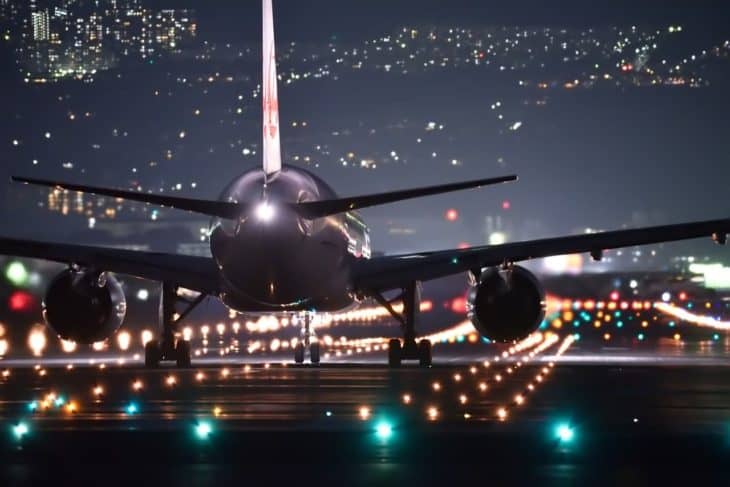
Finally, many optical illusions can occur from the cockpit of the airplane. Runways at different airports look different, which can cause the pilot problems when planning their approach and landing. For example, if the runway slopes up a hill, it makes the runway appear closer than it is. Very wide runways also appear closer than they are. These are just two examples of visual illusions that can trip up the unknowing pilot.
Orientation
Our bodies have three built-in senses to tell us how we are sitting in the world. Are you upside down right now? If you’re sitting in your house, you probably know the answer. First, your eyes tell you that the ceiling is still above you and the horizon is level. In a plane, it could be too dark or cloud to see references like this outside.
Second, you can feel the weight of your body pressing down in the chair. If you lean over, your body senses the difference and helps you balance. This is your kinesthetic sense. But in a plane, the forces of flight pull on the body in many different and unnatural ways. It’s impossible to fly a plane unless you can use your visual sense and ignore this kinesthetic sense.
Finally, sitting at your computer, your inner ear knows that you aren’t moving, thanks to your vestibular sense. Inside your ear, tiny canals full of fluid sense when you’re moving one way or another. If you swing your head back suddenly, you might feel like you are tumbling backward. Hopefully, your visual and kinesthetic senses assure the rest of your body that you are still sitting down. Like the kinesthetic sense, flying in a plane make a mess of your vestibular sense.
Of all of these amazing senses that the human body has evolved to keep us oriented, only the visual sense works in a plane. As soon as we fly in a cloud, that’s gone too. A pilot must understand how flight can fool these senses and what to do if they are.
These aeromedical factors and many others are covered in the FAA Pilot’s Handbook of Aeronautical Knowledge, Chapter 17.
Aeronautical Decision Making
Aeromedical factors are all about the physical body, but what about a healthy pilot or other individuals’ mental abilities? Can they learn to make good decisions throughout their piloting careers? How can mistakes, accidents, or incidents be reduced? In the piloting world, this is the art of aeronautical decision making (ADM). In other fields, it is better described as a form of risk management.
What is a Risk?
To effectively mitigate risk, a pilot needs to know what risks are out there and how severe a threat they represent. One way to identify risk in flight is the PAVE checklist.
The checklist is presented here is a brief glimpse of the things pilots are looking at during flight. Identifying risk is only the first step. Once a risk is identified, the pilot would analyze how much danger is posed and then decide on a course of action to take.
More about risk management in aviation can be found in the FAA’s Risk Management Handbook.
The “PAVE” Checklist of Risk Factors
The PAVE checklist is used to incorporate the four areas where risk can come from for a pilot. For each of these areas, the pilot should have multiple ways to identify risk factors and mitigate them. The four areas of concern are the pilot, aircraft, environment, and external pressures.
Pilot—As we’ve discussed, the pilot is the most likely thing in a plane to cause a problem or present a risk. The I’M SAFE checklist mentioned earlier is an excellent start to understanding if a pilot is fit to fly.
Aircraft—The next thing to look at is the plane. How is it performing? Does it need any maintenance soon? Was any maintenance performed recently that needs to be checked? How much fuel is left, and is the fuel burn as forecasted?
Environment—The plane’s environment includes the weather, the airspace system, and the airports that it uses. The weather is continually changing, and a good pilot keeps a keen eye on how any changes might affect their flight. They are also always working on their escape plan should the weather take a turn for the worse.

External Pressures—Everyone is affected to some extent by other pressures. Is there some outside force that is making the pilot feel like they must complete a flight? Is their boss less-than-understanding about delays? Are their passengers already waiting to be picked up? These factors play a big part in the pilot’s stress level and must be considered. When evaluating risk, do you accept more risk just because you’re running late? Hopefully, the answer is “no.”
The PAVE check is just one example of a condensed and organized way to help a pilot think through a problem. Ideally, the pilot would complete the PAVE check throughout the flight at various phases. Many pilots don’t use the PAVE checklist, and some may have never heard of it. But every pilot accomplishes these tasks one way or another.
Preventing Trouble—Knowing What the Wrong Answer is Before the Right
The last component of human factors is understanding what has gone wrong historically. It’s often said that the flight regulations are “written in blood.” That’s a dreary thought, but it’s more or less accurate. In general, rules have gotten more extensive as more accidents have occurred.
But knowing the regulations is only the first step. Studying these mistakes that others have made only makes sense. Winston Churchill once said it best. “Those that fail to learn from history are doomed to repeat it.”
12 Human Errors in Aviation to Watch For—The “Dirty Dozen”
One common way to identify dangerous patterns is known as the Dirty Dozen. The twelve errors are:
- Lack of communication
- Complacency
- Lack of knowledge
- Distraction
- Lack of teamwork or CRM (crew resource management)
- Fatigue
- Lack of resources
- Pressure
- Lack of assertiveness
- Stress
- Lack of awareness
- Norms or lack of a safety culture
FAA Five Hazardous Attitudes
The FAA distills these concepts down into the “Five Hazardous Attitudes.” These are character traits that come up again and again in accident reports. The idea is that by understanding that these traits lead to bad outcomes, pilots can identify the tendency before the course of action is taken.
Impulsivity: The tendency to take a course of action without thinking it through or getting all the facts is called impulsivity.
Macho: The desire to show off or to prove oneself.

Anti-authority: The negligent disregard or ignorance of the rules and regulations.
Invulnerability: Believing that you are better than others, and specifically believing that an accident will not happen to you.
Resignation: Believing that your actions cannot make a difference to the outcome of a situation.
The decision-making process and risk management are covered in Chapter 2 of the FAA’s Pilot’s Handbook of Aeronautical Knowledge.
Related Posts
